The final and essential step in the production of champagne, the dosage is the moment when a tiny quantity of liqueur is added to the champagne before finally corking it and letting it age again. A decisive phase which will strongly influence the champagne to come.
Expedition liqueur, magnificent alchemy
After disgorging the bottles of champagne, the ritual that removes the deposits installed in the neck of the bottle, the dosage can begin. The bottle is opened, it has lost a little liquid during disgorging, it is time for it to welcome into its bosom a liqueur called expedition or dosage liqueur. Each house has its secret formula but it is mainly composed of reserve wine and very pure sugar. The choice of reserve wine is essential, it is this which will balance the wine and adjust its texture by giving it complexity.
What criteria are used to determine the dosage?
7 types of dosage are available today, each of them corresponding to a very specific quantity of added sugar. A champagne with a very low dosage will by nature be very little sweet.
Brut nature otherwise known as “zero dosage”. This champagne contains no added sugar and less than 3 grams of residual sugar per liter. It is the “driest” of champagnes.
Extra brut: between 0 and 6 grams of sugar per liter. Low in sugar, it is quite “frank” and sharp.
Brut: less than 12 grams of sugar per liter. It is the most consumed champagne, perfect as an aperitif with its balanced notes.
Extra dry or Extra sec: between 12 and 17 grams of sugar per liter. This is a false friend because Extra dry is in fact rather dosed in sugar and not "dry" as its name might suggest. Softer in the mouth, it is similar to a real gastronomic champagne
Make way for the “sweet” clan
Some champagnes are noted for their relatively high sugar content. They correspond to an older trend where people liked to consume champagne with a fairly high sugar content.
Dry: between 17 and 32 grams of sugar per liter. It was also called “American taste,” which corresponded to the preferences of our friends across the Atlantic who were fond of it.
Demi-sec: between 32 and 50 grams of sugar per liter. This is a dessert champagne that goes very well with fresh fruit or shortbread.
Le Doux: more than 50 grams of sugar per liter. These sweet champagnes are also called “Russian taste”, a country where they were particularly popular in the last century.

Dose to “twist” or transform
Dosage can play a more or less important role in the production of champagne. Some houses keep a deliberately neutral dosage so as not to change the singularity of their wines. Others, on the contrary, rely on extremely worked expedition liqueurs comprising great wines stored in barrels years before. Tests are carried out to choose those that will best correspond to the signature of the house. Real work around the fusion and balance that makes the strength of a great champagne.
Ideas for companion dishes
It's not always easy to pair food and champagne. Bruts (extra, natural, etc.) are a divine accompaniment to seafood, shellfish, grilled fish and, in general, all seafood products. An Extra Dry and a Demi Dry are a wonderful accompaniment to pan-fried foie gras. The latter also lends itself very well to desserts. At the beginning of the century, sweet champagnes were appreciated. Our contemporary gastronomy has nothing to do with that of the time, hence the appearance on our tables of champagnes that are less and less sweet.




